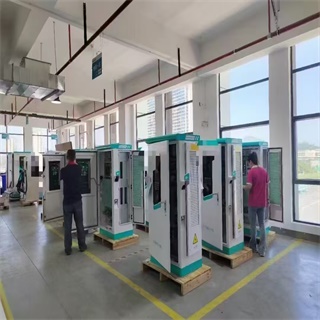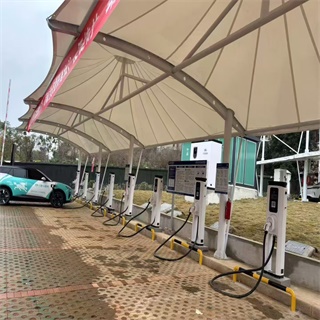EV Charging in Car Parks: From Cost to Speed
Let’s be real – charging your EV shouldn’t feel like solving a calculus problem. While plugging in at home works for some, let’s face facts: most city dwellers don’t have that luxury. Between cramped streets, apartment living, and road trip pit stops, parking lot charging isn’t just convenient – it’s becoming downright essential.
But here’s what keeps EV owners up at night: “Will this charge cost me an arm and a leg?” and “Can I juice up fast enough to make my next meeting?” These aren’t just first-world problems – they’re make-or-break questions shaping where businesses invest in charging infrastructure.
In this deep dive, we’ll break down the real costs you’ll encounter at different parking locations, compare charging speeds head-to-head, and spotlight some smart business plays that could change the game. Because understanding this charging puzzle isn’t just about convenience – it’s about powering the future of transportation (literally).
Electricity Prices for U.S. Residents
When it comes to the true cost of charging electric vehicles in the U.S., it’s like opening a geography textbook on an electricity bill—the differences in electricity prices between states can be more striking than the distance between the East and West Coasts. As of spring 2025, the average U.S. resident pays approximately 17 cents per kilowatt-hour (0.17 USD), but this figure hides extreme disparities: in sunny California, electricity prices soar to 32 cents; the Hawaiian Islands in the Pacific break the 41-cent threshold; while residents in Washington State in the Northwest pay just 12 cents, nearly a third of Hawaii’s rate.

How much does it cost to charge a home electric vehicle?
Taking the standard 40-kWh battery of a mainstream electric vehicle as an example, a full charge at the average electricity rate costs only $6.80, translating to 3-4 miles of driving range per kWh. This means that for every mile driven, the average owner’s wallet only loses about 5 cents. Smarter drivers take advantage of “power time differences”—charging during off-peak hours at night, when electricity rates in some regions can drop by 30%, allowing their vehicles to recharge at low cost while they sleep.
Charging cost ($) = Electric vehicle battery capacity (kWh) × Electricity rate ($/kWh)
Annual vehicle usage cost comparison
When the average annual mileage for Americans is 13,489 miles, electric vehicle owners’ electricity bills range from $506 to $720. Traditional gasoline vehicle owners face a completely different situation: the same mileage requires an investment of $1,600 to $2,100 in fuel costs. The nearly $1,000 annual difference between the two is enough to outfit an electric vehicle with a full set of smart accessories. If we shift the scene to Washington State, where electricity prices are lower, the cost of charging a 40-kWh battery is less than $5—cheaper than a large latte at Starbucks.

The Hidden Economics of Charging
Choosing the right location on the electricity price map has become a must-learn lesson for new EV owners. The cost of charging once in California (approximately $12.80) is enough for a Washington State owner to charge twice. More subtly, the average industrial electricity price (7.88 cents) is only 46% of residential rates, explaining why some Tesla Supercharger locations can offer rates close to home charging—when infrastructure is developed, public charging may not be more expensive than home charging.
This temporal and spatial game of electricity consumption is reshaping the automotive ecosystem: combining low-cost regions with smart charging strategies can reduce the cost per mile for electric vehicles to 3 cents, equivalent to one-quarter of the cost of a gasoline-powered vehicle. While the numbers on gas station electronic screens keep changing, electric vehicle owners’ smartphone apps are generating a completely different consumption narrative.
Car park EV charging
The true cost of car park EV charging
The convenience of car park EV charging is undeniable, especially when traveling long distances or in cities without fixed parking spaces. However, compared to home charging, car park charging often costs more—in some cases up to three times as much.
Take an electric vehicle with a 40kWh battery as an example: charging it fully at a Level 2 charging station typically costs around $8 to $10, while using DC fast charging (DCFC) can cost as much as $16 to $24. Converted, the average cost of Level 2 charging is $1 to $5 per hour, equivalent to approximately $0.20 to $0.25 per kilowatt-hour (kWh). Level 3 or fast-charging stations are more expensive, costing between $0.40 and $0.60 per kWh, with total expenses reaching up to $30.
If a driver relies entirely on Level 2 public charging for the entire year, based on the U.S. average annual mileage (13,489 miles), annual charging expenses would range from $770 to $963. If all charging is done at fast-charging stations, this cost would rise to approximately $1,540 to $2,300.
Of course, actual costs are influenced by various factors, including charging network brand, geographical location, local electricity rates, and whether parking fees are required. While some shopping malls or government agencies offer free charging services, these resources are often scarce, subject to usage restrictions, and unsustainable for long-term reliance.
Car park vs. home charging: which is more cost-effective?
In most cases, home charging remains the most cost-effective option for electric vehicle owners. Compared to public Level 2 charging, home electricity rates are generally $0.04 per kilowatt-hour lower or more. Compared to fast public charging, this gap may widen to two to three times.
However, the advantage of car parks, especially fast charging, lies in speed. Home Level 2 charging may take 4 to 10 hours to fully charge, while fast charging can reach 80% capacity in 30 minutes. For users who need to travel quickly, choosing fast charging—even if slightly more expensive—can provide greater convenience and flexibility.
Long-term usage costs of electric vehicles
Are electric vehicles really more cost-effective? The answer depends on your daily driving habits and charging methods.
The average U.S. driver travels approximately 36 miles per day, so most electric vehicle owners can meet their daily commuting needs through home charging. Statistics show that approximately 80% of electric vehicle owners choose to charge at home. Not only is it cheaper, but it also reduces reliance on public charging stations, avoiding issues like queuing and limited availability.
In the long term, electric vehicles can save approximately $950 annually in fuel costs, with cumulative savings of $6,000 to $10,000 over their lifecycle. Additionally, electric vehicles have simpler construction and fewer moving parts, resulting in lower maintenance costs—routine maintenance typically only involves basic components such as tires, brakes, and windshield wipers.
Over five years, the maintenance cost for an electric vehicle is approximately $4,200, and repair costs are approximately $1,700, offering a significant advantage over the $4,500 maintenance cost for gasoline-powered vehicles.
The relationship between battery lifespan and charging methods
It is worth noting that frequent use of fast charging may affect battery lifespan. Research indicates that driving in hot climates or frequently using fast charging may cause battery capacity to decrease by 3% to 9% after 50,000 miles. To extend battery lifespan and reduce future replacement costs, it is crucial to balance the use of slow and fast charging appropriately.
Policy incentives reduce total costs
In terms of cost structure, federal and state government subsidies continue to alleviate the financial burden on vehicle owners. For example, the U.S. federal government offers eligible electric vehicle owners a tax credit of up to $7,500, while some states and utility companies provide additional subsidies for installing home charging stations and discounted electricity rates.
Conclusion:
Car parks are an indispensable component of a complete EV ecosystem, especially for urban users and long-distance drivers, as they provide necessary flexibility and emergency support. However, achieving a balance between charging costs and efficiency still requires owners to make flexible choices based on their individual circumstances. Whether it’s home charging or car parks, mastering charging strategies is key to fully leveraging the economic and environmental advantages of electric vehicles.
